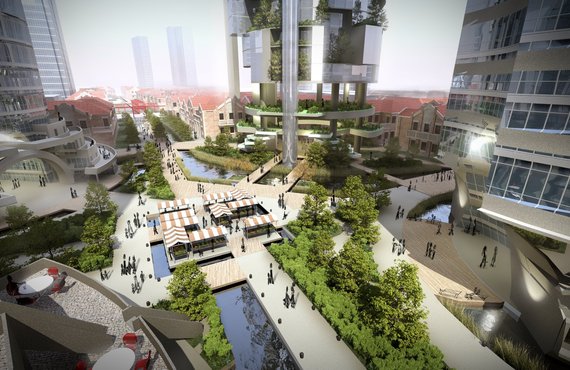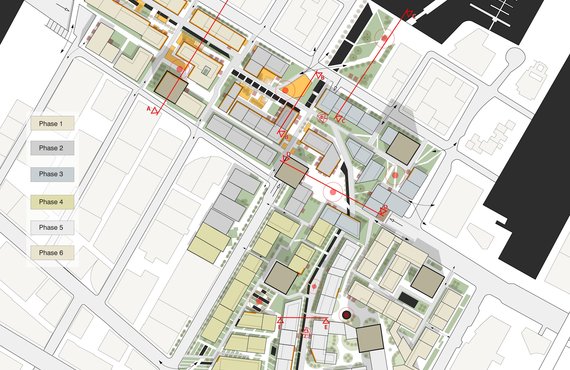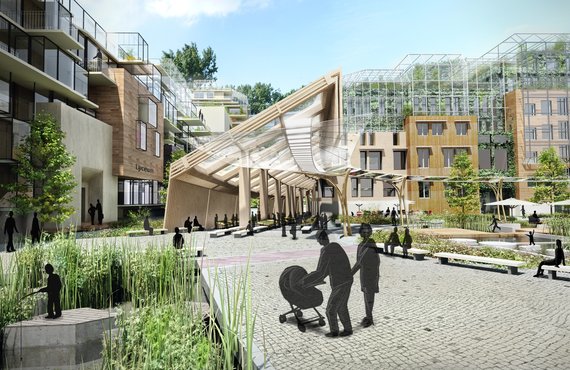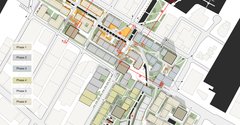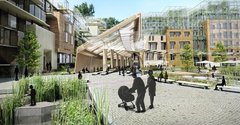
Urban Design & Planning
Service > Building the sustainable communities of the future
Except develops designs and concepts for sustainable cities. With our multi-disciplinary team, we blend economic, cultural, and environmental aspects into the sustainable urban areas of the future.
Urban intelligence
Smart cities, sustainable cities, green cities... it's the talk of the town. But who knows how to develop, design and organize the processes necessary to move towards truly sustainable cities? This is what Except started doing in 1999, and continues to innovate and work on.
We work on the following areas:
- Sustainable urban development & Design
- Eco-cities & urban ecology
- Urban agriculture
- Adaptive urban redevelopment
- Economic redevelopment strategy
- Industrial symbiosis & redevelopment
- Urban metabolism
Systems approach
We approach these complex questions by putting the gadgets and fancy design aside for a bit, and analysing the clockwork of the city, understanding what makes it tick, grow and thrive. Our scientists, economists, ecologists, architects and urbanists analyze each location, find out its specific nature, and make sure that with every move that's made the city gets better, fundamentally.
After we know what'll make it work, we develop what is necessary to make it work: attract new business, redevelop buildings, public spaces, waste, water, food or social development. We'll choose what's the best direction for each area, rather than what's trending. And we'll make sure it has timeless design, to create long lasting value and enthuse residents, business, investors and policy makers alike.
Together for the long term
We work on long term development strategies rather than single efforts that get lost in the whole. We feel the necessity to involve the local population, and put them in the driving seat, providing them with all intelligence and tools needed to make these decisions.
This is how we feel a city develops: with, by and for its inhabitants, using ecology as a main driver, economy as an opportunity and beauty and safety as necessary edge conditions.
Ecology & Economy
The city needs ecology to exist, and economy to thrive. Without nature, the city becomes a dead object, continuously demanding inputs, expenses and with decreasing health and living quality.
Using nature as a positive and powerful driver for urban development is a given for us. It's the foundation we stand on, and which we work on for over a decade. With it, we include people, and with them, find smart and resilient ways to boost local economies. We believe that strong and flourishing communities can be created using these principles, and we've shown it can be done.
Spatial symphonies
Except’s urban design work looks at the city as a symphony. Just as in music, it’s not just about the notes but just as much about the pauses in between the notes that create the music.
Urban design orchestrates the city, weaves space, function, nature, and society in an intricate tapestry. Our cities are under increasing scrutiny regarding their environmental impact. Except weaves an urban tapestry that is self-supporting, resilient, and sustainable in the long-term, answering local and national governments’ questions on how to proceed towards sustainable urban development.
Examples
Polydome
Polydome is a revolutionary approach to greenhouse agriculture that offers the possibility of commercial scale, net-zero-impact food production. The Polydome system strategically interweaves a wide variety of crops and animals, taking advantage of every inch of the greenhouse while eliminating the need for synthetic fertilizers and pesticides.
Polydome is an answer to a part of the world food crisis. With its high yields (60 – 90 kg per square meter), and diverse outputs (over 50 crops, two mushroom varieties, chickens, eggs, fish, and honey), even a small Polydome system can sustainably provide a varied food supply for a large population. Scalable. Profitable.
Polydome has been extensively researched by Except and over 12 partners in the industry. Concept overview and technical details are published in a free open source book, downloadable below.

Growth-Planning Area Planning & Development
Growth Planning introduces an entirely new approach to area planning and urban design. Rather than defining specific programmatic requirements, Growth Planning instead applies socio-economic impulses to the area within certain performance edge conditions. It revolutionzes the task of city design by requiring the urban fabric to organically respond to social and economic stimuli, and allows for increased value, quality, and development over time.
Born out of the necessity to start thinking differently about our built environment due to economic, social and environmental constraints, Except has worked on refining this new form of planning since 2005.

Shanghai Urban Masterplan
This masterplan transforms downtown Shanghai into a fully sustainable community, in energy, food, water, and jobs, designed for Expo 2013. The plan strategically interweaves sustainable innovation with exciting urban design, and making it run with urban agriculture, sustainable technologies and vertical farms. The result is a valuable and beautiful urban community, an emergent circular economy, and a future-proof investment.
The Shanghai urban master plan demonstrates the Urban Renaissance approach on a specific site adjacent to Nanjing road, incorportating a historic Lilong housing district.
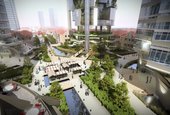
Boston Fort Point Masterplan
This urban redevelopment project of the Fort Point district in Boston, MA proposes a unique strategy to reduce city-wide traffic congestion, increase livability and property values and contributes significantly to the resilience of the city as a whole.
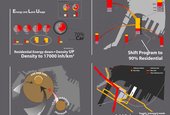
Sustainable Schiebroek-Zuid
We developed a sustainabile conversion and development plan for the post-war social housing area Schiebroek-Zuid in Rotterdam. The project provides a flexible and exemplary roadmap for converting the neighborhood into a self-sufficient and sustainable area. It applies innovative energy solutions, urban farming, social and economic programs, secondary currencies, and adaptive redevelopment strategies.
This project was commissioned by housing corporation Vestia and agricultural research network InnovatieNetwerk.
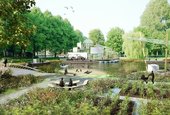
San Francisco Transbay / Salesforce Park
The San Francisco Transbay Center redevelopment project realizes the world’s largest rooftop park in the center of one of the world’s most exciting cities: Salesforce Park. The concept, developed by Except together with Pelli Clarke Pelli Architects, restructures an existing transport hub into a beacon of beauty, biodiversity, and health. The project started in 2007 and the park opened in 2019.
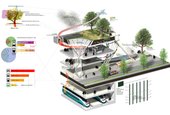
District heating vision Tilburg
This project researches a sustainable district heating system in the Dutch city of Tilburg, developed with our consortium partners.
The vision includes both ecological and social sustainability, and functions as the starting point for all parties involved to cooperate toward a sustainable and carbon neutral heat provision.
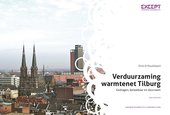
Vision on Sustainable Public Transportation
How can public transportation contribute to resilient and sustainable cities and communities?
With a team of Public Transportation stakeholders and experts in the city region of Rotterdam we developed a vision on how this can be done. The vision came into being through several intense collaborative sessions, and is used to engage new stakeholders and move the agenda forward towards the most sustainable public transport system in the world.
Download the vision booklet below (sorry, only in Dutch).

Sustainable Urban Districts - 2015 Global Review - WWF
This project arose from the joint desire of WWF and Lafarge to contribute original research to move the construction sector towards a sustainable future. We examined 11 exemplary urban districts and neighborhoods around the world from inception to inhabited, using a systemic and holistic perspective. We extracted the success and failure factors, and uncovered new strategies that accelerate sustainable development both on a project and building sector level.
The result is available in a comprehensively illustrated book, downloadable from this page, or read it online at ISSUU.
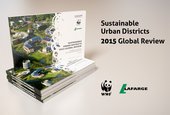
Zevenkamp through our eyes
“Zevenkamp through our eyes: a story of three students and one neighborhood” is an urban transformation project by Except Academy, a learning platform for interns at Except. We developed an inspiration book which tells the story of our journey and experiences while investigating Zevenkamp, the second largest post-war neighborhood in the Netherlands.
The purpose of the book is to inspire and share our vision of Zevenkamp’s future. It has practical examples of opportunities for the neighborhood to become flourishing and resilient with the help of its residents and stakeholders.
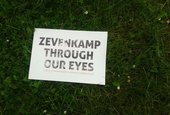
Schiphol-Oost Pioneer Park
Amsterdam Schiphol Airport was born at Schiphol-Oost, over 100 years ago. Today it is a business park that could use more atmosphere and vision. With limited identity, it does not distinguish itself from other business parks in the surrounding area. In collaboration with Schiphol Real Estate (SRE), Except developed a vision and strategy for Schiphol-Oost for the coming 5 to 10 years. The vision transforms Schiphol-Oost to an innovation-garden for the entirety of Schiphol, named Pioneer Park.

Roadmap to the BGI Manual
Blue Green Infrastructures (BGI) increase the resilience of urban and rural landscapes, integrating their core functions with natural features and processes. Hurdles exist in the process of translating BGI-related knowledge and data from science to practice, and a tool that facilitates this transfer is still missing. We conducted a research in collaboration with a team of partner organizations (JNCC, IFLA Europe, BiodivERsA, and NRW), to pinpoint key preliminary knowledge to design such a tool, and collected our key findings in a report downloadable on this page.
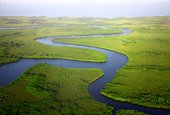
Contact
Tom Bosschaert
Director
 +31 10 7370215
+31 10 7370215
